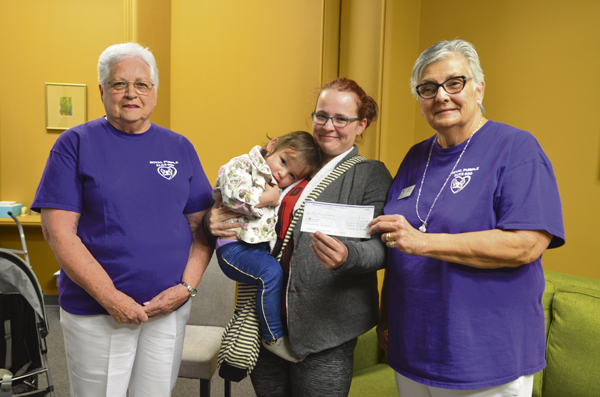
When two-year-old Aria Gagne returned from a month-long stay in the hospital after contracting meningitis this past March, her mother, Ember Spitzack, knew something was wrong.
Aria wasn’t answering to anything. She wouldn’t respond if you called her name.
“You’d have to poke her to get her attention,” Spitzack said.
They went to an ear, nose and throat specialist, who referred the family to the province’s new otologist, Dr. Paul Mick, who specializes in diagnosing and treating ear issues. Mick moved to Saskatoon a little over a month ago to be the surgical director of the cochlear implant program. It’s the first time Saskatchewan has had an otologist for 18 months.
Aria went through a series of tests. She had no hearing in either ear.
It’s been challenging for Spitzack’s other kids, who keep trying to talk to Aria. But Aria has adapted.
“She knows how to ask for things,” Spitzack said. “She’ll go to the fridge and tell me when she’s hungry.”
Young children with hearing loss often don’t speak, because they can’t hear. In cases of severe hearing loss, devices like hearing aids might not be an option.
Luckily, the toddler is a candidate for a pair of cochlear implants, medical devices that improve hearing in children and adults with severe to profound hearing loss. The surgically-implanted devices provide electronic hearing through the use of an implant placed into the inner ear and a sound processor worn behind the ear like a hearing aid. The sound processor picks up the sounds, sending it to the internal implant, which transforms them into electrical signals that directly stimulate the hearing nerve, allowing the brain to hear sounds.
Aria gets her cochlear implants put in this Friday. She will heal for a month before they are turned on and she will once again be able to hear her mother’s voice.
Spitzack only recently found out the surgery would happen this week. She was worried about how she was going to be able to afford it.
Thanks to the local chapter of the Royal Purple Elks, she doesn’t have to worry anymore. On Tuesday, members of the Royal Purple Elks #50 presented Spitzack with a cheque for $500 to help cover her fees.
“I was thrilled,” Spitzack said when she found out. “It will help so much. It will help me with my gas, my food and my lodging for the days I’m there. It was awesome.”
Funding part of long-term partnership
The help provided to Spitzack is the latest contribution in a long-running partnership between the Elks and Royal Purple Saskatchewan and the Saskatchewan Pediatric Auditory Rehabilitation Centre (SPARC), located at Saskatoon’s Royal University Hospital.
It was established in 1976 under the University of Saskatchewan’s Department of Surgery in the College of Medicine. The centre has since worked with more than 525 families from across the province.
At the time, there were no rehab services available to children with hearing loss under three years of age. Since 1976, the Elks have been holding annual walkathons to raise money for the program. In 1981, the Ministry of Health also began contributing funds. Still, the majority of funds come from the Elks and Royal Purple of Canada.
Eight years ago, SPARC became involved in the Saskatchewan Cochlear Implant Program.
Aria isn’t the first young Prince Albertan to benefit.
Fellow young resident Michael Pelechaty is a young advocate for SPARC. He speaks for children who are born deaf and works hard to raise awareness for SPARC.
While Aria wasn’t born deaf, the help of SPARC and Prince Albert Royal Purple Elks #50 means just as much.
Two members from the group, Denise Taylor and Peggy Ganton, presented the donation to Aria and Ember Tuesday. Taylor has long been involved in the fundraising and advocacy projects. Seeing the impact close to home, she said, is always a special moment.
Taylor explained that she was contacted by Lynn Brewster, SPARC’s head audiologist, about Spitzack’s need. Her group did the rest.
“We support detection for hearing impairment,” she explained. ‘We also lobbied when the government cut the hearing testing for newborns. We lobbied to have that reinstated and they have reinstated it again.”
Every year the local chapter participates in the walkathon. But they don’t always get to meet local children who benefit.
“It’s amazing,” Taylor said.
“We have a walkathon in October and it’s indifferent to locales in the province. We usually have somebody come to talk to us. Last year we had a (child) from Esterhazy. It’s amazing. The parents are just so thankful we can give them this money to help their child.”
Taylor said seeing the change in a child after they get their implants and gain the ability to hear and to talk is special
“If you’ve ever seen a child that can’t speak because they can’t hear, and then you see a video of them when they are talking, it’s amazing,” she said.
“It tears at your heartstrings.”
— with files from Andrea Hill, Saskatoon StarPhoenix

